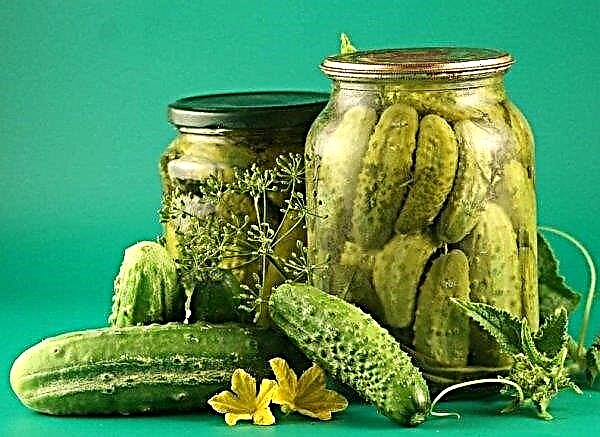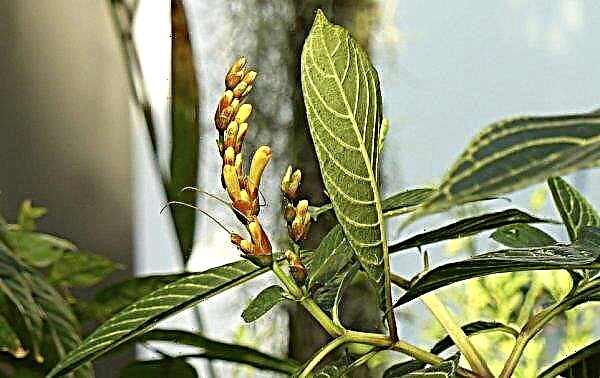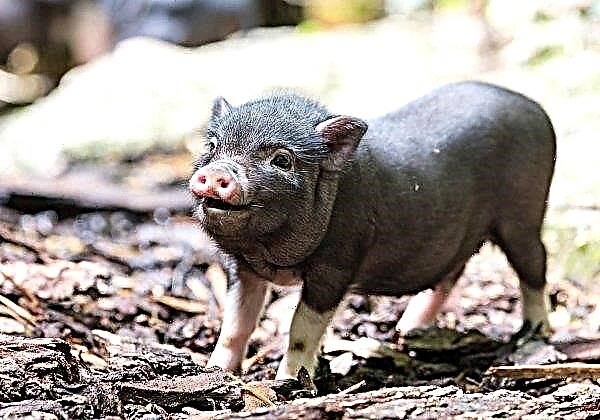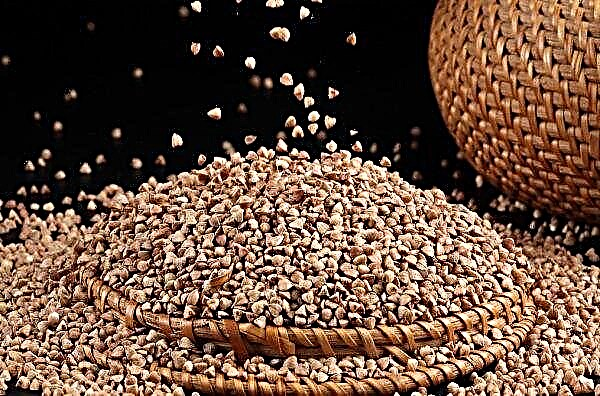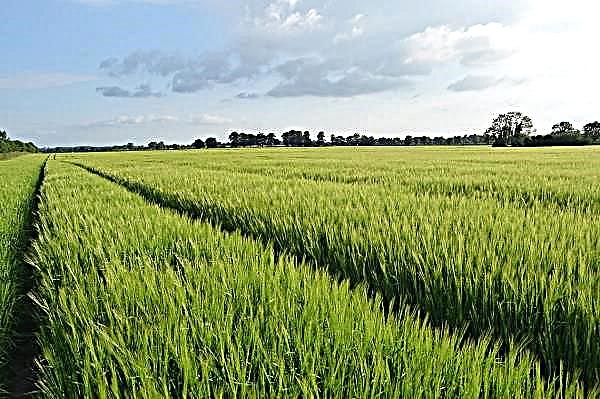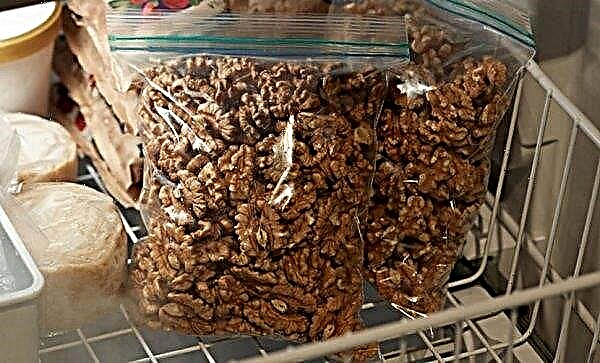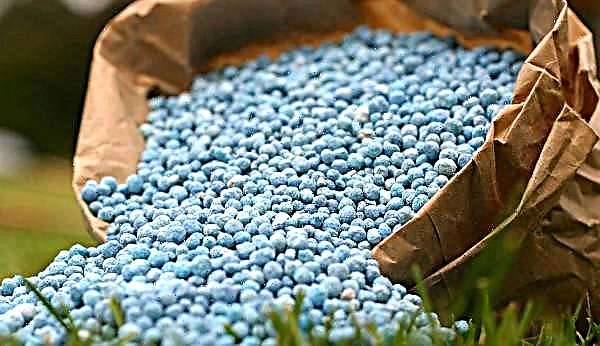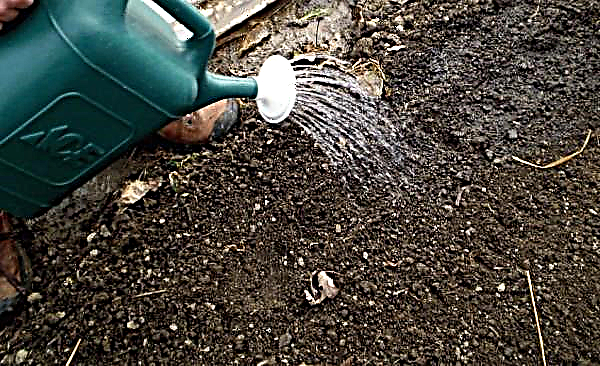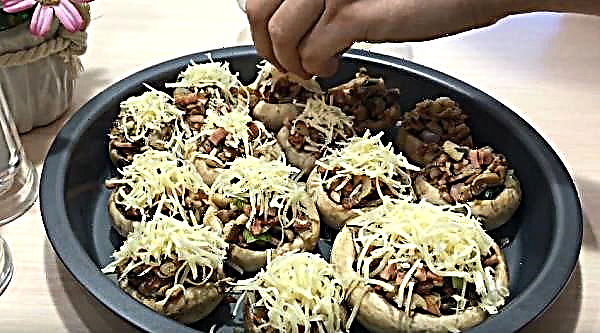Tomato seedlings are often grown in adverse conditions - insufficient lighting, coolness, temperature changes and dampness. This provokes diseases of young immature plants. In the article we will talk about the diseases that tomatoes are susceptible to, how to treat them and what measures to take for prevention.
Diseases of tomato seedlings and methods for their treatment at home
Before you start treating diseased young tomatoes, you need to determine the causative agent of the disease. Carefully monitor the seedlings - the disease can be detected by a change in color, in the shape of leaves, stem. At the first signs of an ailment, it is necessary to choose the right drug, because those funds that are used in the open ground are not always suitable for home conditions.
The causative agents of diseases of tomato seedlings are fungi, bacteria and viruses. Pathogenic microflora can live everywhere - in the soil, on seed and stock, carried by air and insects, transmitted from a sick plant to a healthy one. The appearance of pathogens is more often observed in high humidity and in weak specimens. The reason for the poor condition of young tomatoes may be a lack of minerals.
The optimum soil moisture for the development of seedlings is at the level of 80%, and air - about 50-60%. The humidity of the room where the tomato seedlings are located should not exceed 75%.
Did you know? Tomatoes contain the “hormone of happiness” — serotonin. This neurotransmitter is also found in foods such as dates, chocolate, plums, bananas, cheeses and other dairy products. Their use is useful during depression.
Fungal
Fungi are often affected by tomato seedlings. Consider the diseases they cause.
Late blight
Symptoms Dark spots appear on the leaves, then they are transferred to the stem and as a result the plant dries.
Phytophthora spores can be in the ground, be introduced by air when ventilating the premises, be on seed, containers, tools. They begin to actively develop with high humidity, temperature changes and quickly hit the thickened seedlings. Late blight is often caused by dampness of the room, waterlogging of the soil, spraying plants with water, seeds collected from tomato infected with late blight.
If signs of late blight are detected, the plants spray the seedlings with copper preparations - Bordeaux liquid (0.7%) or copper sulfate (0.1%).
Blackleg
Signs: a black spot appears at the base of the tomato, the stem at the site of the lesion becomes thinner, decays, and then the plant bends and falls.
The black leg often appears against the background of a lack of light. The reasons for its occurrence are dense plantings, cloudy weather, waterlogging, damp room.
When a black spot appears at the bottom of the seedling stem, the soil is watered with a weak solution of manganese or copper sulfate (5 g per 1 liter of water), the drug Fitosporin-M, Bactofit, Fundazol, Maxim. In addition to chemical treatment, sprinkle the surface of the soil with a mixture of sand, ash and dolomite flour.
Rot
Rot happens: white, gray, black. Her disputes live in the earth and begin active life with an increased level of humidity.
Signs: the stalk becomes covered with spots characteristic of the type of this disease color, gradually turning to other parts of the plant. White, gray and black rot
White, gray and black rot
Sick bushes are disposed of, and healthy ones are sprayed with Bordeaux liquid or copper sulphate, as is the case with late blight.
Fusarium wilt
The roots are affected, while the stem of the tomato darkens and weakens. The plant begins to fade from the top, the foliage brightens, the leaves bend and fall. The source of damage is untreated soil, seeds, and the disease itself develops against the background of a lack of light at high humidity.
Ill-disposed tomatoes are disposed of, and apparently healthy ones are sprayed with Phytocide, Trichodermin, Phytosporin-M.
Cladosporiosis
This disease is also called brown spotting, since it is characterized by the formation of brownish spots on the leaves of seedlings. They appear on the back of the sheet and have a roughness. First, yellowish spots appear on the surface. As a result of the development of cladosporiosis, the leaf turns brown, curls and falls off.

The spores of the fungus develop against a background of increased humidity - waterlogging of the soil, dampness, watering with cold water. The plants remove the affected foliage and treat it with Bordeaux liquid (1%), “Barrier” or “Barrier”.
Did you know? Tomatoes are good for smokers. They help cleanse the body of tobacco smoke, reduce pressure and suppress inflammation.
Dry rot
This disease, also called alternativenialiosis, first manifests itself by the appearance of brown spots on the back side. The disease affects the entire leaf, it turns brown and disappears. After shedding foliage, the fungus passes to the stem.
It develops with increasing humidity due to overmoistening of the soil or temperature spikes, and actively spreads in warm weather. Having found dry rot, chemical preparations should be used, for example, Acrobat, Ditan, Quadrice.
Powdery mildew
Signs: on the foliage, a white plaque is noticeable, which will turn into chlorosis, and then necrosis of greenery. The leaves become wrinkled and turn yellow. The fungus lives in the soil and can develop when watering seedlings with cold water. They use fungicides - “Quadris”, “Strobi” or “Topaz”. After a while, the treatment is repeated.
Important! Sometimes leaves turn white not due to illness, but due to a lack of minerals. The cause of this phenomenon also becomes sunburn, if the young seedlings are sharply taken out under the bright rays of the sun.
White spotting
Signs: the leaves at the bottom of the plant are covered with black dots, turn brown, dry and fall off.

The disease penetrates from untreated soil. The disease can only be stopped at the initial stage. Seedlings are treated with copper sulfate or Bordeaux liquid.
Viral
It is not easy to identify these diseases at the seedling stage. Young plants should be carefully considered.
Mosaic
Light spots appear on the leaves, and tomato foliage becomes mottled due to the alternation of yellow, pale green and green leaves. Then she falls.
Often, mosaic infection occurs through unprocessed seeds. The diseased seedlings are thrown away, and the remainder is treated with a weak potassium permanganate solution or urea solution (5%).
Aspermia
This disease causes a delay in the development of tomatoes, expressed in small leaves, deformation and fading of fruits in which there are no seeds.
Diseases are transmitted by pests (for example, aphids), poor-quality planting stock and contaminated soil. It is actively developing in thickened plantings, in heat and humidity. Ill specimens are disposed of.
Strick
This virus attacks the green part of the plant and characteristic strokes are observed on seedlings. The disease is similar to late blight, but with it the leaves dry more strongly. The disease infects seedlings through contaminated soil and seeds. Sick plants cannot be treated and disposed of.
Bacterial
Bacteria usually infect weak plants.
Important! Do not sow tomato seeds in cold ground. Such seedlings will germinate for a long time, will be weakened and susceptible to disease. The optimum temperature for seed germination is +25 ... + 30 ° C.
Brown spotting
Yellowish spots appear on the leaves, which join together and turn brown. The reverse side becomes an olive hue, and then acquires a red hue. It develops against a background of high humidity. They are treated with copper preparations (Bordeaux liquid, copper sulfate). You can use chemicals: "Fitolavin", "Fitosporin M".
Black spotting
A scattering of black spots appears on the diseased seedlings, on the stems and foliage. The infection occurs through an uninfected soil mixture, seeds, containers or equipment, and quickly develops in high humidity. The treatment consists of treating 1% Bordeaux liquid.
Chemicals are used:
- "Fitolavin",
- Fitosporin-M
- "Oksikhom."
Stolbur
With this bacterial disease, the seedlings become smaller and stained with pinkish or purple tones. The ground part becomes coarse.

The stubble is carried by insects and spends the winter in the roots of perennial weeds. Heavily infected plants are thrown away. At the first sign, the seedlings are treated twice with the bactericidal preparation Fitoplasmin. To restore the bacterial microflora of the soil, after 4 days, the soil is watered with the bacterial preparation “Extrasol”.
Bacterial wilt
Seedlings begin to fade for no reason. First, the lower leaves wilt, and then the whole plant. When the disease has developed strongly on the stem, brownish streaks can be seen along its length. The causative agent of bacterial wilting is transmitted through contaminated soil, stock, and water. It affects weakened plants and actively develops with high humidity, especially when water falls on the greens during irrigation.
The affected seedlings are discarded, and the remaining seedlings are treated abundantly from the spray with a solution of Fitoflavin-300 (1%).
Bacterial cancer
This severe bacterial disease affects the tomato inside the stem, causing ulcers. The plant itself begins to fade.
Transmitted through contaminated soil, seeds, plants. Often penetrates through damage on a tomato. Sick plants are destroyed, and healthy ones are sprayed with Fitoflavin (0.2%).
Non-infectious
Diseases of tomato seedlings can be without the presence of a pathogen. The reasons are the lack of vitamins and minerals.
These include the following:
- Lack of nitrogen. A sign is a pale color of foliage. If such a deficiency is detected, it is necessary to supplement with nitrogen. For example, use a urea solution in a proportion of 1 tablespoon per 10 liters of liquid.
- Phosphorus deficiency. It manifests itself in the formation of dead areas on the leaves, which gradually acquire a purple color. Brownish blotches appear on the bottom of the sheet. In this case, it is necessary to fertilize the soil with double superphosphate based on a ratio of 10 tbsp. tablespoons per 1.5 liters of water, and after 150 gr. such a solution is kneaded in 10 l of liquid. Ammonium sulfate can also be used in a proportion of 2 teaspoons per 1 liter of water.
- Lack of copper. A sign of such a deficiency is the curl of leaves and the bending of petioles to the bottom. Foliage loses its color and acquires a light gray color, but the veins retain greenery. Feeding with a 3% solution of copper sulfate or copper sulfate solves the problem;
- Lack of iron. With a deficiency of the element, the leaves lose their color and are affected by necrotic spots. It is necessary to make 0.25% of iron sulfate.
- Potassium deficiency. It is detected in the formation along the edges of the leaves of the burned areas, gradually increasing. Appeared leaves wrinkle, and then get a grayish color. The introduction of wood ash or potassium sulfate into the soil helps a lot.
- Ncalcium deficiency. A sign of occurrence is necrosis in the lower leaves. These specimens become susceptible to many diseases and fade. It is necessary to apply fertilizer in the form of calcium nitrate in a ratio of 25 g. on 10 l of liquid.
- Lack of sulfur. It is detected in the form of a pinkish-faded color of the back side of the leaves located closer to the petiole. In the future, necrotic plaques are found, and longitudinal stripes of dark brown color appear on the petiole. Leaves are pulled up and become brittle. It is necessary to add magnesium sulfate in a proportion of 30 g. on 10 l of liquid.
Important! Seedlings actively consume minerals such as phosphorus and potassium and require phosphorus-potassium top dressing three times for the entire growing period before planting. The introduction of nitrogen during this period should be moderate.
Preventive measures against tomato diseases
Any disease, including for tomatoes, is better to prevent than to cure. Indeed, many diseases of plant crops significantly reduce the yield and quality of the resulting fruits, and some are poorly treatable.
Gardeners recommend the following preventive measures against a number of tomato diseases:
- Adhere to all crop rotation rules. Do not plant tomatoes in the area where tomatoes and other members of the nightshade family, suffering from the same ailments, grew last season.
- They dig the earth in the autumn before frost, so that the larvae of insect pests and pathogens freeze.
- To remove all the remains of vegetation in the fall, so as not to create comfortable conditions for the wintering of harmful microorganisms.
- In the autumn and spring, carry out a complete disinfection of the greenhouse, as well as the soil.
- In case of detection of diseases in large quantities, replace the soil in the greenhouse.
- To carry out prophylactic treatment with biological products such as Bayleton, Actellik.
- To disinfect the seeds before planting in the soil using the appropriate chemicals (solution "Epina", "Humate" or "Zircon").
- To use "Humate" when watering, and also to spray them with seedlings in the morning at a concentration of 0.002%.
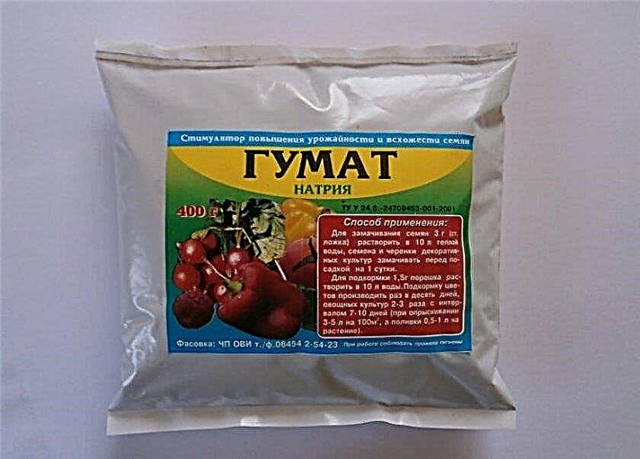
- Carry out proper watering with warm, settled water. Water under the root and prevent over-saturation with moisture, as well as drying out the soil. Water the seedlings during the day, and not at night when the temperature drops. But plants planted in the ground in warm weather are watered when there is no heat (morning and evening).
- Disinfect containers for planting, if already used.
- To disinfect soil (in an oven, manganese, boiling water).
- It is imperative to add top dressing to enrich the soil with beneficial microorganisms. To do this, use drugs that include fungicidal, phosphomobilizing and nitrogen-fixing bacteria, potassium. After making such preparations and planting the seed material, 2-3 days should pass.
- Carry out seed treatment - calibrate, soak, harden, heat, treat with fertilizers and growth stimulants, disinfect, sparge. You should not do all the procedures at once. It is enough to choose 2-3 treatments. For example, harden and disinfect. Disinfection must be carried out without fail, for example, soak in potassium permanganate for 20 minutes. and rinse.
- Observe the timing and depth of sowing.
- Do not use fresh manure for the mixture, since the salt contained in it prevents the absorption of nutrients.
- Maintain temperature in the range of +22 ... + 25 ° С and optimal humidity. Heat the greenhouses and do not plant seedlings until the ground has warmed up and the threat of frost has gone.
- Exclude drafts when growing seedlings, provide good illumination. With a lack of light, you can use lamps (fluorescent or phyto).
- Timely make fertilizing, strengthening and developing the plant.
- Avoid severe thickening of landings. In crowded places, seedlings do not develop well, and good conditions are created for fungi and bacteria.
- Apply chemicals to strengthen the plant, treating the roots during a dive. Perform preventive spraying (with boron, iodine, yeast, vitriol, garlic infusion).
- Buy seeds of varieties that are resistant to various diseases from reliable suppliers and pay attention to the expiration date.
Useful treatment recommendations
When identifying diseased plants, experts recommend:
- Rearrange the diseased instance to another place. When caring for it, use separate gloves and tools.Be sure to wash your hands thoroughly with soap and water after all procedures with such plants.
- First, you should work with completely healthy bushes, and then with the diseased.
- Feed to strengthen the plant.
- After identifying and treating a certain disease, in the future do not forget about preventive treatments against this particular type of disease. Healthy plants should also be treated.
- It is better not to use seedlings that are too affected by diseases for planting, but to dispose of them.

There are folk recipes that help get rid of many diseases of tomatoes:
- Spray the plants with such a mixture - stir 100 gr. baking yeast in 10 liters of water.
- Grind 0.5 kg of garlic and insist in 3 liters for 5 days. Then 50 gr. dilute the resulting solution in a 10-liter bucket and add 50 gr. crushed soap. Spray the seedlings with the product.
- You can do the spraying by stirring in 10 liters of water 1.5 cups of chopped garlic and 2 grams. Manganese
For tomatoes, it is more important to prevent the disease than to fight it later. Today, many simple and effective preventive measures are known to avoid diseases. Do not forget about creating the conditions for tomatoes - a more developed plant successfully resists all misfortunes.Did you know? Most cooks (68%) prefer canned tomatoes when cooking, as they have a more intense aroma and taste. Preservation such as tomato ketchups and tomato paste contain much more natural antioxidant lycopene than fresh fruits.



